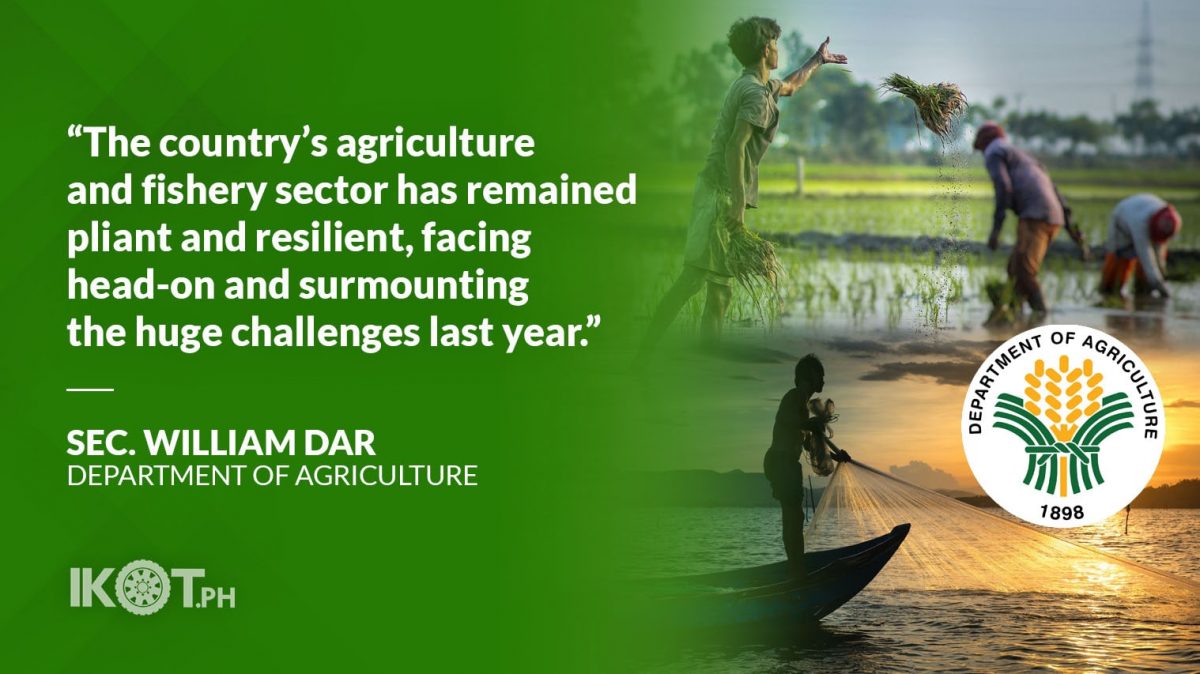Despite the “perfect storm” that ravaged the country in 2020, the agriculture and fishery sector showed its resilience as it contracted by only 1.2 percent.
“We believe that despite the Taal Volcano eruption, the COVID-19 pandemic, the continued incidence of the African swine fever (ASF), and the series of strong typhoons, the country’s agriculture and fishery sector has remained pliant and resilient, facing head-on and surmounting the huge challenges last year,” Agriculture Secretary William Dar said.
“The crops sub-sector posted a positive 1.5 percent growth, despite a string of strong typhoons that ravaged Luzon and parts of the Visayas.”
“Serving as the silver lining and big consolation was that the crops sub-sector posted a positive 1.5 percent growth, despite a string of strong typhoons that ravaged Luzon and parts of the Visayas,” Dar added.
“Expectedly, the livestock and poultry sub-sectors performed poorly — at -7.4% and -3.5%, respectively — due to the ASF incidence in Central Luzon and low demand of chicken due to limited operation of fastfood chains and restaurants,” the agriculture chief said.
“For the fisheries sector, which dipped by 1.2 percent, we hope that it could pick up steam this year, as we embark on a massive aquaculture and mariculture development program, and enhanced partnership between commercial and municipal fishers for joint venture fishing operations,” the agriculture head added.
He said the DA expects that production of rice and corn sub-sectors will further increase in the first semester and the entire 2021, barring strong typhoons, as about close to P20 billion is allotted for said major commodity banner programs.
To rev up the livestock sub-sector, particularly the hog industry, the DA will implement a twin-program that entails the strong leadership of the local government units to massively implement the “Bantay ASF sa Barangay” or BABay ASF program, in partnership with the private sector, veterinary groups, academe, hog raisers and traders.
BABay ASF is coupled with a swine re-population program, where backyard and commercial raisers on ASF-free areas or “green zones” will be given incentives to go back into business.
A similar program to prop up the poultry industry will be likewise pursued by the DA through its National Livestock Program (NLP), setting aside an initial P1.5 billion for the BABay ASF, hog re-population, and poultry development programs. In addition, the DA through the DA-Agricultural Credit and Policy Council (ACPC) will allot an initial P500 million for lending to backyard and semi- commercial raisers.
“The Land Bank of the Philippines (LBP) has approved a special financing window for swine commercial raisers with an initial exposure of P15 billion.”
“Another favorable development is that the board of directors of the Land Bank of the Philippines (LBP) has approved a special financing window for swine commercial raisers with an initial exposure of P15 billion,” said Dar, who sits as member of the LBP board.
“In all, with the OneDA family, in continued strong partnership with the LGU chief executives, the private sector, farmers and fisherfolk, and agri-fishery industry stakeholders, we will aim for a 2.5-percent growth this year,” he concluded.

